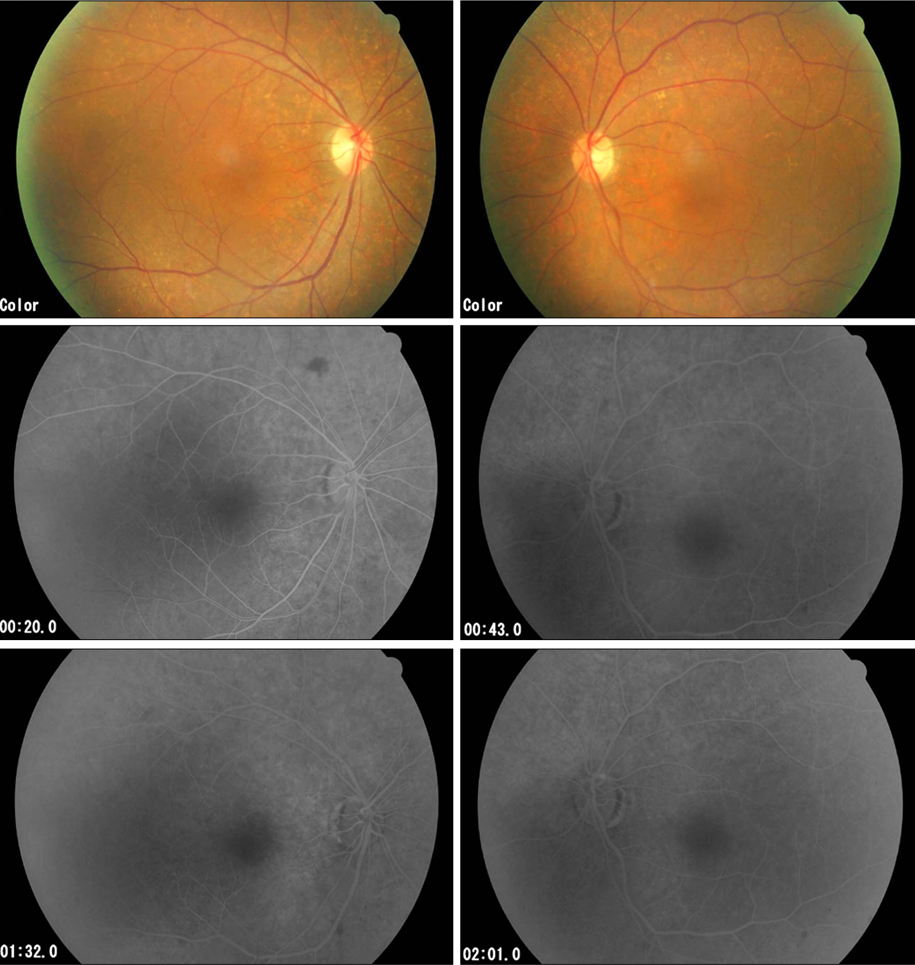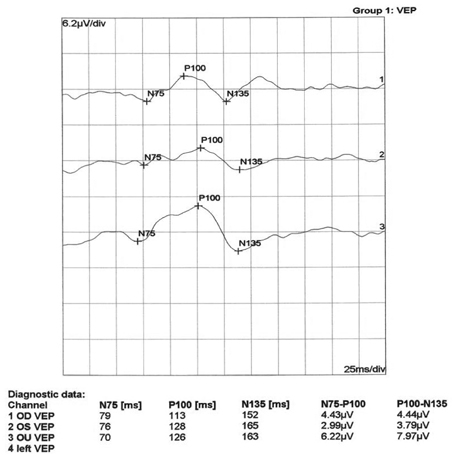Korean J Ophthalmol.
2011 Feb;25(1):69-71. 10.3341/kjo.2011.25.1.69.
Maculopathy Associated with Tacrolimus (FK 506)
- Affiliations
-
- 1Myung-Gok Eye Research Institute, Department of Ophthalmology, Kim's Eye Hospital, Konyang University College of Medicine, Seoul, Korea. ungsookim@kimeye.com
- KMID: 994418
- DOI: http://doi.org/10.3341/kjo.2011.25.1.69
Abstract
- A 63-year-old man with a history of liver transplantation presented to our clinic complaining of visual disturbance. He had been receiving tacrolimus (FK 506) for 30 months (6 mg/day for 2 years and 3 mg/day for 6 months); he reported that the visual disturbance began while taking tacrolimus. A full ophthalmologic examination and electrophysiologic and imaging studies were performed. The best corrected visual acuity was 0.1 in both eyes. There were no abnormal finding in the anterior segment, pupillary reflexes were normal and, there was no swelling in either optic disc. Although the foveal reflex was slightly decreased, fluorescein angiography revealed non-specific signs, with the exception of a window defect. A multifocal electro-retinogram revealed decreased amplitude of the central ring. A Swedish interactive threshold algorithm-standard 10-2 visual field test revealed a central scotoma. These findings suggest that tacrolimus may result in maculopathy. Therefore, careful ophthalmologic examination is necessary in the patients taking tacrolimus.
Keyword
MeSH Terms
-
Electroretinography
Evoked Potentials, Visual
Fundus Oculi
Humans
Immunosuppressive Agents/*adverse effects/therapeutic use
Liver Transplantation
Macula Lutea/*drug effects
Male
Middle Aged
Postoperative Care
Reaction Time
Retinal Diseases/*chemically induced/diagnosis
Scotoma/chemically induced/diagnosis
Tacrolimus/*adverse effects/therapeutic use
Tomography, Optical Coherence
Figure
Reference
-
1. Brazis PW, Spivey JR, Bolling JP, Steers JL. A case of bilateral optic neuropathy in a patient on tacrolimus (FK506) therapy after liver transplantation. Am J Ophthalmol. 2000. 129:536–538.2. Steg RE, Kessinger A, Wszolek ZK. Cortical blindness and seizures in a patient receiving FK506 after bone marrow transplantation. Bone Marrow Transplant. 1999. 23:959–962.3. Kessler L, Lucescu C, Pinget M, et al. Tacrolimus-associated optic neuropathy after pancreatic islet transplantation using a sirolimus/tacrolimus immunosuppressive regimen. Transplantation. 2006. 81:636–637.4. Galor A, Ference SJ, Singh AD, et al. Maculopathy as a complication of blood-brain barrier disruption in patients with central nervous system lymphoma. Am J Ophthalmol. 2007. 144:45–49.
- Full Text Links
- Actions
-
Cited
- CITED
-
- Close
- Share
- Similar articles
-
- A Case of Recalcitrant Psoriasis Improved with Tacrolimus (FK 506)
- Effect of FK 506 on the cornea: use of topical FK 506 in corneal transplantation in a guinea pig-rat model
- The Effects of Cyclosporin A and FK-506 on the Cytokine Production of Lymphocytes in Atopic Dermatitis
- Limb Allotransplantation In Rat Immunosuppressed with FK-506
- Nerve regeneration effect of FK-506 using local reserve flap





